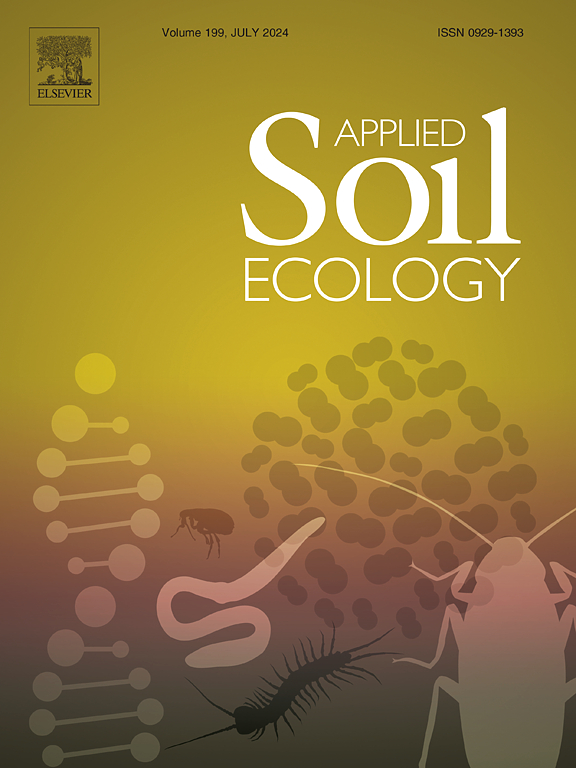Soil microbes drive the negative effect of plant diversity on community stability in zokor-disturbed alpine grasslands
IF 4.8
2区 农林科学
Q1 SOIL SCIENCE
引用次数: 0
Abstract
Alpine grasslands are complex ecosystems where plant community stability is shaped by multiple biotic and abiotic factors. However, the underlying mechanisms of how plant-soil-microbe interactions influence plant community stability remain largely unexplored. To address this, we explored the relationships among soil nutrients, plant and microbial diversities, and plant community stability (measured as variation in plant aboveground biomass) along a secondary succession gradient of alpine grasslands disturbed by zokors, a subterranean rodent, on the Qinghai-Tibet Plateau, China. Our findings indicate that plant aboveground biomass, density, coverage, and α-diversity increased during the recovery of zokor-disturbed grassland. Potentilla bifurca was the dominant species, exhibiting the highest population density and the strongest niche overlaps with other species. Intriguingly, plant community stability declined as the grasslands recovered. Structural equation modeling revealed that changes in soil microbial α-diversity accounted for 57.0% of the variation in plant α-diversity, which subsequently explained 79.2% of the variation in plant community stability. Furthermore, the divergence of plant phylogenetic structure led to reduced plant species coexistence and increased plant stochastic assembly along the succession process. These findings indicate that increased soil microbial diversity promotes higher plant diversity, further lowering plant community stability. The recovery of zokor-disturbed grassland triggers complex interactions among plants, soil, and microbes, revealing how shifts in soil microbial diversity drive changes in plant community stability through interspecific competitive dynamics and phylogenetic structure. Our findings provide critical insights for future ecological restoration strategies, emphasizing the importance of considering microbial and plant diversity interactions in recovery planning.

求助全文
约1分钟内获得全文
求助全文
来源期刊

Applied Soil Ecology
农林科学-土壤科学
CiteScore
9.70
自引率
4.20%
发文量
363
审稿时长
5.3 months
期刊介绍:
Applied Soil Ecology addresses the role of soil organisms and their interactions in relation to: sustainability and productivity, nutrient cycling and other soil processes, the maintenance of soil functions, the impact of human activities on soil ecosystems and bio(techno)logical control of soil-inhabiting pests, diseases and weeds.
 求助内容:
求助内容: 应助结果提醒方式:
应助结果提醒方式:


